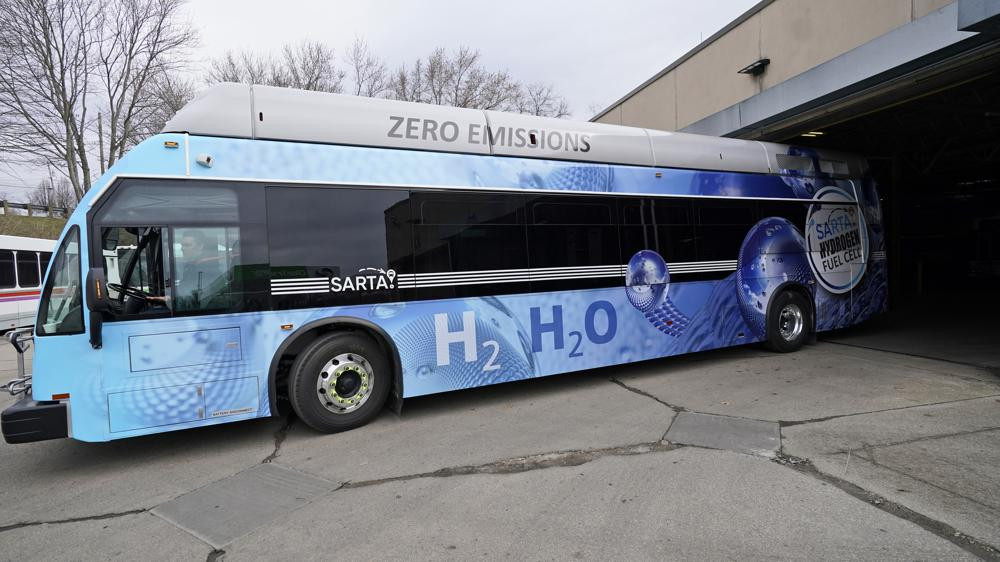In the pursuit of sustainable transportation, the global automotive landscape is witnessing a profound transformation. The rise of electric vehicles (EVs) and hydrogen fuel cell vehicles (FCVs) presents an opportunity for countries like Nepal to make environmentally conscious choices. As the transition toward sustainable transportation gains momentum in Nepal, the interest in electric vehicles (EVs) is significant. However, there is a growing curiosity about hydrogen cars and how they differ from electric cars. Let's delve into the working technological difference between hydrogen cars and electric cars, and why it is necessary for country like ours to shift focus from electric vehicle to hydrogen powered cars.
Technology Difference between Electric Vehicle and Hydrogen Vehicle
Hydrogen cars and electric cars differ primarily in their energy storage and conversion technologies. Here's a breakdown of the key technology differences between hydrogen cars and electric cars:
Energy Storage:
Hydrogen Cars: Hydrogen fuel cell vehicles use a fuel cell to convert hydrogen gas into electricity. The hydrogen is stored in high-pressure tanks on board the vehicle. The fuel cell then combines hydrogen with oxygen from the air to produce electricity, water, and heat.
Electric Cars: Electric vehicles are powered by batteries, usually lithium-ion batteries. These batteries store electrical energy and release it to power an electric motor, which drives the wheels of the vehicle.
Energy Conversion:
Hydrogen Cars: Hydrogen fuel cells directly convert chemical energy from hydrogen into electricity through an electrochemical reaction. The overall process involves fewer conversion steps compared to the indirect method of electricity generation and storage in batteries.
Electric Cars: Batteries store electrical energy, and the electric motor converts this stored electricity back into mechanical energy to drive the vehicle. This involves two energy conversion steps: charging the battery and discharging it to power the motor.
Charging/Refueling Infrastructure:
Hydrogen Cars: Hydrogen cars refuel at specialized hydrogen refueling stations. These stations compress and dispense hydrogen gas, and the refueling process is similar to that of traditional gasoline vehicles.
Electric Cars: Electric vehicles charge using electrical outlets, which can range from standard household outlets to specialized charging stations. Charging times and speeds can vary based on the charging infrastructure and the vehicle's charging capacity.
Range and Refueling Time:
Hydrogen Cars: Hydrogen cars often boast longer ranges on a single refueling compared to many electric cars on a single charge. Additionally, refueling a hydrogen car takes only a few minutes, similar to the time it takes to refuel a traditional gasoline car.
Electric Cars: While electric vehicles have varying ranges, they generally have shorter ranges than hydrogen cars. Charging times for electric cars can vary, with standard charging taking longer than faster charging options.
Weight and Space Considerations:
Hydrogen Cars: Hydrogen fuel cells and high-pressure storage tanks can be heavy, affecting the overall weight and space utilization within the vehicle. This can impact factors like handling and cargo space.
Electric Cars: Batteries contribute significantly to the weight of electric vehicles, but advancements in battery technology are continually improving energy density, reducing weight, and optimizing space usage.
Efficiency:
Hydrogen Cars: Hydrogen fuel cell vehicles have improved in efficiency, but there are still energy losses in the production, transportation, and conversion of hydrogen.
Electric Cars: Electric vehicles generally have high efficiency in converting stored electrical energy into motion, with fewer energy losses in the overall process.
Adopting hydrogen cars in Nepal presents a compelling opportunity to harness the country's vast potential for clean hydrogen production and to strategically shape its sustainable transportation future. With a rich abundance of renewable energy resources, particularly in hydropower, Nepal is well-positioned to become a leading player in the production of green hydrogen, a process that utilizes renewable energy to produce hydrogen through methods such as electrolysis.
As Nepal is still in the early stages of electric car adoption, there is an advantageous window to shift focus toward hydrogen cars. While electric vehicles (EVs) have gained traction globally, Nepal's unique circumstances, including the absence of lithium mines, present challenges for the sustainability and affordability of battery technology. The reliance on lithium-ion batteries for EVs necessitates resource-intensive mining and poses concerns about the long-term availability and environmental impact.
Redirecting efforts toward developing infrastructure for hydrogen cars aligns with the country's strengths in renewable energy and minimizes dependency on resource-intensive technologies. Investing in hydrogen refueling stations and promoting the adoption of fuel cell vehicles can be pivotal in creating a robust and diverse transportation network. Moreover, the extended range and quick refueling times of hydrogen cars make them well-suited for Nepal's challenging terrain and long-distance travel requirements.
Policy support is fundamental in this transition, including incentives for the establishment of hydrogen infrastructure and subsidies for hydrogen fuel cell vehicles. Collaborative efforts between the government, private sector, and international partners can accelerate the development of a hydrogen ecosystem, ensuring a seamless transition to a sustainable and economically viable transportation paradigm.
In conclusion, shifting the focus from electric cars to hydrogen cars in Nepal is a strategic move that leverages the country's clean energy potential and addresses the challenges associated with battery technology. By embracing hydrogen as a viable alternative, Nepal can position itself as a pioneer in sustainable transportation, contributing to global efforts in combating climate change and fostering a cleaner, greener future for its citizens.
(The author holds an engineering degree from USA , and is an energy entrepreneur currently working in clean energy and mobility sector in Nepal)

